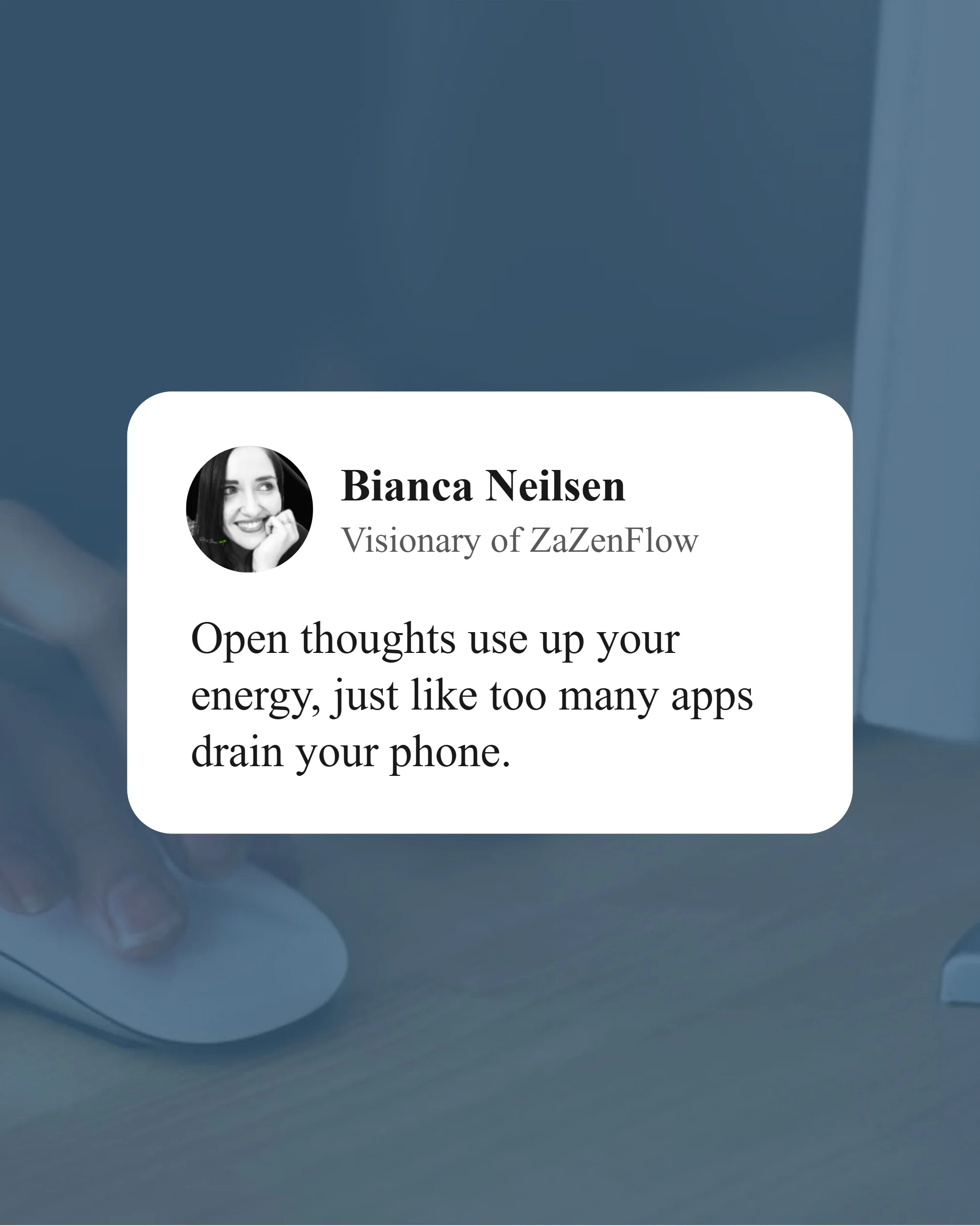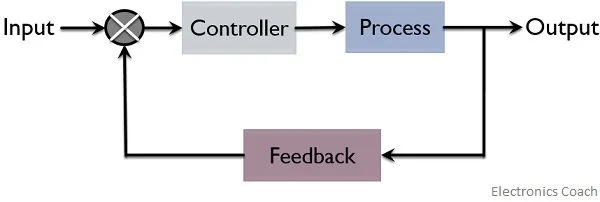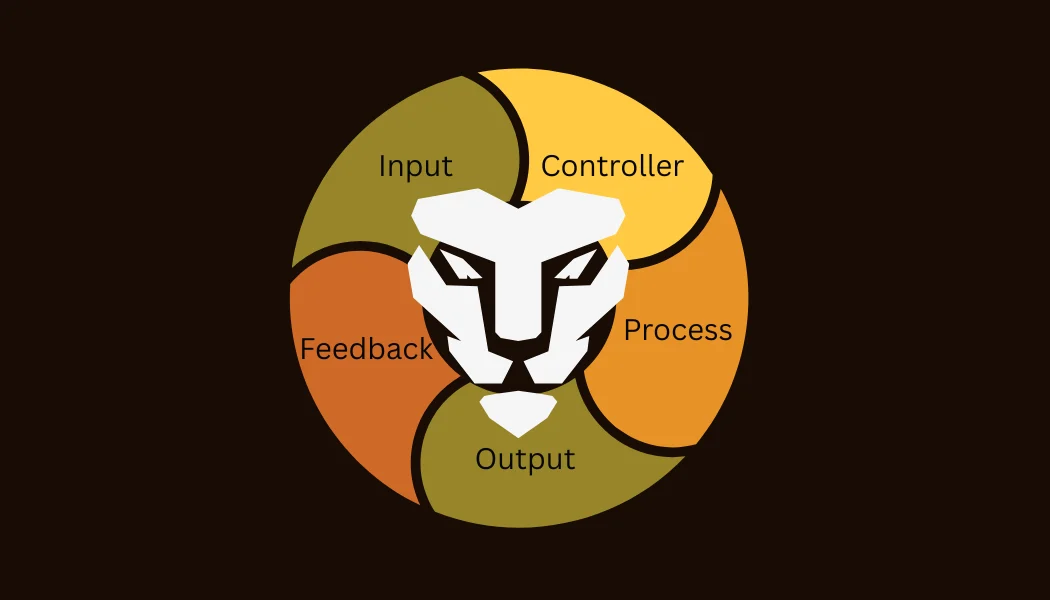Why Feeling Overwhelmed Sucks.

I used to be the person stuck in YouTube tutorial hell.
Thousands of free downloads, strategy PDFs, and content calendars piling up in folders I never opened.
I thought I was getting ahead.
But I wasn’t building anything. I was just circling the runway.
That is the trap of conceptual overload — collecting ideas, but never using them.
Consuming information, but never applying it.
You know what to do, but cannot seem to do it.
It is like reading the rules of a board game 12 times and never rolling the dice.
At some point, you have to stop preparing and start playing.
This shows up in:
- The ideas still sitting in your notes app.
- The things you have saved in your phone never to be seen again.
- The content you keep thinking about but never create.
- The things you say you’ll do when you’re “ready”.
These are all open mental loops.
Your brain keeps them running like apps in the background — and they drain energy.
The longer they stay open, the more overwhelmed you feel.
They don’t just clutter your mind — they clog your momentum.
You stay in motion, but never make real progress.
Feeling Busy but Going Nowhere
It is not the size of your to-do list — it is the weight of what is left unresolved.
This is why you feel busy but never move forward.
Until you close these mental loops, your mind will keep replaying these thoughts.
It’s the decision not made, an action not taken.
The brain holds onto it. It burns energy. You feel heavy, restless, stuck.
Think of it like an alarm going off on your phone, it is annoying and all you want to do is hit snooze but it will come back with its nagging loud sound again.
Until you act, by stopping the alarm and getting out of bed.
This is how you close the loop. The alarm is part of a snooze cycle.
You acted. You made a decision. The mind said lets go.
No more snoozing. No more second-guessing.
You closed the mental loop on the in-between realm of “should I or shouldn’t I get out of bed”.
That small decision cleared the static. It told your system (your physical body) what to do next.

Your Nervous System Is a Loop
The nervous system works in exactly the same way —
It opens and closes loops of thought, emotion, and behaviour.
When a loop stays open — with an unresolved decision or an unfinished task — your system remains active, burning energy and blurring focus.
Close the loop, and the system stabilises.
Clarity returns. Momentum builds.
Not every mental loop is meant to be closed.
Some are designed to repeat — getting hungry, tidying the house, planning your week, choosing what to focus on.
These tasks do not end once and for all. They cycle back.
We cannot eliminate them — we have to refine how we place our energy as we move through them.

Closed-Loop Control Systems
When it comes to repeated use of energy — whether in machines or humans the goal is the same: efficient flow.
You act, receive feedback, adjust, and repeat.
It is not about perfection. It is about refining the loop with every cycle.
This is a closed-loop control system — a real-world circuitry model in electronics where the flow of energy moves in a continuous loop, using feedback to make real-time adjustments and keep the system running smoothly.

Why does this matter?
Because when the loop is working, even under pressure, the system adapts.
That is true for machines, and it is true for your mind.
It takes in input, adjusts in real time, and moves toward balance.
Your internal circuitry is built for this — to restore flow, not just react to overload.
You see this in machines like air conditioning systems.
They sense the temperature, compare it to a set point, and adjust the output to maintain comfort — all in a seamless loop.
And the body does the same — regulating temperature, balancing blood sugar, adjusting posture — often without you even realising it.
These systems are built to auto-correct.
They respond to change, maintain balance, and keep things running smoothly often without conscious input.
What Happens When the System is Overloaded
But what happens when the loop breaks?
When feedback is ignored, blocked, or no longer effective?
Think about a faulty air conditioner — the room gets hotter and hotter because the system stops adjusting.
The conditions change, but the output stays the same.
No correction. No balance. Just rising discomfort.
Or when your blood sugar crashes — the regulation between food, insulin, and energy goes off track.
Apply this to your mind.
When you carry too many open mental loops — unfinished tasks, unmade decisions, unresolved thoughts — your internal system becomes overwhelmed.
You are flooded with input, but lack a mechanism for adjustment.
This leads to:
- Efficiency drops
The system becomes sluggish. You lose momentum and clarity. - Feedback becomes unreliable
You struggle to interpret what matters. Even small decisions feel loaded. - Errors increase
Details slip. You forget steps. You rush through tasks with diminished quality. - The system overheats
In machines, this means literal heat. In you, it shows up as stress, anxiety, and emotional reactivity. - It shuts down or breaks
Eventually, the system forces a pause — whether through burnout, illness, or emotional crash.
You might know what to do, but feel paralysed.
Not because you lack discipline — but because your circuitry is jammed.
You are running without regulation.
Your mind; Your Actions
A closed-loop system has five key parts:
Input, Controller, Process, Output, Feedback.
And you can apply that same structure to your mind and actions

Input
What comes into your world — information, tasks, emotions, decisions.
If you take in too much without filters, your system floods.
Curate your input. Limit noise. Clarify what deserves your attention.
Controller
This is the decision-maker — your values, goals, priorities.
Without a strong controller, everything feels urgent.
Strengthen your inner compass. Know what matters most so you can direct focus accordingly.
Process
How you act on what matters — thinking, planning, creating.
This is where work gets done.
Build clear workflows and routines that help you move ideas into action without overthinking.
Output
What you produce — results, choices, finished tasks.
This reflects the quality of your process and priorities.
Focus on meaningful outputs, not just busywork. Small wins that close the loop.
Feedback
This is the most overlooked — yet most vital — part of the loop.
It is your reflection layer. The response.
How you feel, what you learn, what changes as a result of your action.
Without it, you don’t evolve — you repeat.
You miss the signal. You start over from scratch.
And the loop becomes a cycle of frustration instead of refinement.
Feedback is where growth happens.
It is where systems improve.
Check in often.
Did that action move you forward?
Do you need to adjust the input? The process? Or your expectations?
Without feedback, the system doesn’t just stall — it resets to confusion.
When all 5 parts are aligned, the system flows.
Energy is used efficiently.
Focus becomes automatic.
And overwhelm fades — not because life got simpler, but because your system got smarter.
Creating a Smarter System
You do not fix overwhelm by creating more overload.
You fix it by closing what’s open, reducing noise, and restoring flow.
Here’s where to start:
1. Identify your open loops
List the tasks, decisions, and ideas that keep circling in your head.
Ask yourself: What keeps coming up that I haven’t resolved?
2. Close one small loop today
Pick one. Finish it.
Send the email. Make the call. Decide the next step.
Relief comes faster than you think.
3. Design repeatable systems
Some loops do not close.
Instead of avoiding them, design a system for them.
Let them flow through your circuit, not build up as resistance.
4. Capture with purpose
You do not need to stop taking in ideas — but you do need to channel them.
Most people hoard information because they have nowhere clear to put it.
Create a capture system that directs ideas into the right circuit —
Somewhere they connect to action, not just sit in storage.
Sort them by area of life, project, or priority.
If you do not trust that you’ll return to it, it becomes mental noise.
When something sparks? Channel it.
5. Protect your focus
Treat your mind like a circuit board.
Too many tabs open? Close them.
Too much noise? Mute it.
Protect the clarity that drives your system forward.

Close the Loop, Clear the Static
Mental overwhelm is not a sign that you’re weak — it’s a signal that your system is overloaded.
Too many open loops.
Too much input with no output.
Too much learning, not enough living.
Like any well-functioning circuit, your mind needs flow — not friction.
When you design your loops — when you decide what to close, what to repeat, and where to store what matters — you restore clarity.
You move from noise to signal.
From spinning to momentum.
This isn’t about doing more.
It’s about thinking cleanly, acting deliberately, and trusting the system you’ve built to support your energy — not drain it.
Overwhelm fades when structure steps in.
And confidence builds not by knowing everything, but by moving with what you already know.
Start there.
Close one loop.
And let your circuitry return to flow and function.
